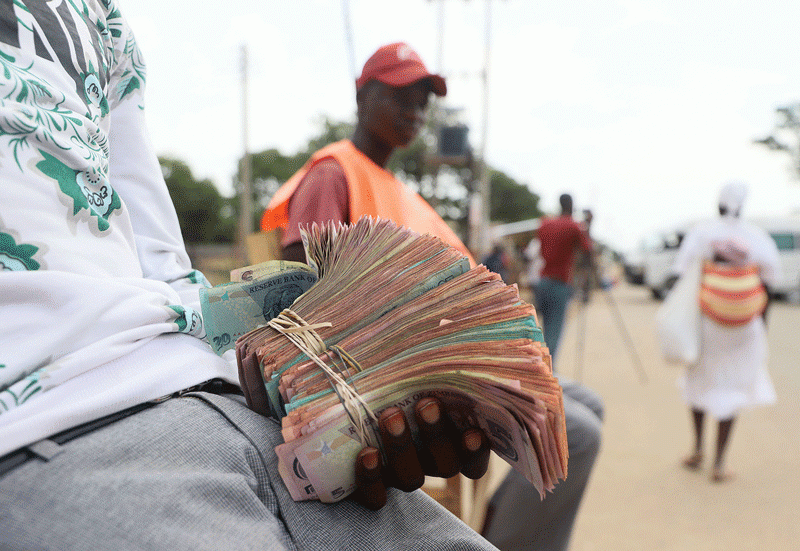
ZIMBABWE’S annual inflation rate remained elevated at 18,4% in September, despite the authorities adopting a geometric aggregation method to analyse the consumer price index (CPI).
The Zimbabwe National Statistics Agency (ZimStat) yesterday said it would move away from an arithmetic aggregation method in determining the blended inflation rate to a geometric aggregation method.
The move by ZimStat comes following recommendations made by the Southern African Development Community (Sadc) in July.
While the new method showed a massive drop in the annual inflation rate, the September figures cannot be compared to August’s 77,2% since a different calculation was used.
ZimStat prices statistics manager Thomas Chikadaya said the huge difference was caused by the new methodology, adding that it was more accurate in comparing the US dollar and the Zimdollar economic weights.
“We usually follow the United Nations manuals we have reviews from the IMF (International Monetary Fund), Sadc, so we had a Sadc mission in July to review our numbers, and when we were doing arithmetic aggregation that is where the mission recommended that we can improve our statistics by making use of the geometric aggregation,” he said.
“As an agency, we do not necessarily get instructions from Treasury but we follow the international recommendations by Sadc and IMF. This was caused by the change in the methodology.”
He confirmed that in the past they used arithmetic aggregation and now they have adopted the geometric aggregation calculation.
- Mavhunga puts DeMbare into Chibuku quarterfinals
- Bulls to charge into Zimbabwe gold stocks
- Ndiraya concerned as goals dry up
- Letters: How solar power is transforming African farms
Keep Reading
“The new methodology is taking into account the accurate computation of the two indices taking into account their weights. The new methodology takes into account the participation of the weights, that is the USD which is normally 80% of the weights and the ZWL$ is about 20% of the weights,” Chikadaya said.
“In other words, what will come out will be an index that truly reflects the weight of these transactions. We normally capture all Zimdollar prices and United States-denominated prices and then weigh them.”
Chikadaya said the geometric aggregatory method did not include the calculation of the Total Consumption Poverty Line (TCPL) as it had its own method of calculation.
According to ZimStat, the TCPL for Zimbabwe was ZWL$95 462,53 per person this month representing an increase of 4,8% compared to the August comparative of ZWL$91 063,30.
“In terms of methodology, we are normally required to implement the new methodology in all the indices but when it comes to the poverty datum line, it has its own methodology. This is because it is the calculation of the poverty datum line, and it is quite different from any other index. We only follow international guidelines,” Chikadaya said.
“The inflation rate for the month of September 2023 rose by 2,3 percentage points from -1,3 in August 2023 and currently stands at 1%. The rise implies that prices, as measured by the all-items consumer price index (CPI), increased by 1,0% between August 2023 and September 2023.”
This is the second time ZimStat has changed the method of calculating inflation statistics this year after the introduction of the blended inflation rate in March amid calls by critics that it was “rigging” statistics.










